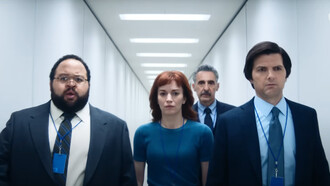In an intimate interview, acclaimed Chilean filmmaker Jorge Lopez Sotomayor shares his remarkable journey from teenage director to visionary filmmaker, revealing his passion for storytelling and his ambitious new project that bridges Chile and India.
A cinematic journey begins
Jorge Lopez Sotomayor's filmmaking career began at the tender age of 16 when the United Nations selected him as one of three students to create a film about university life. When his classmates hesitated, Sotomayor enthusiastically volunteered. "I said, 'Yes, me.' And they said, 'Okay.' So I did my film with the help of professional people," he recalls with a smile. "They gave me a camera. The director of photography was a professional, which I was directing at 16 years old. And I loved it."
This early experience sparked a passion that would define his life. Upon returning to school, he established a theater department, and by age 20, he was directing the rock opera "Jesus Christ Superstar" to tremendous acclaim. His theatrical success caught the attention of Chilean film companies, but his momentum was abruptly halted by a coup d'état that forced him to flee the country.
"Everything shut down. No more theater, no more restaurants, no more anything. And I was 20 or 21 years old. And I said, Okay, go away."
From Hollywood to homeland
Lopez Sotomayor's journey led him to Hollywood, where he studied filmmaking with the intention of eventually returning to Chile to make films for his people. After a decade abroad, he returned to his homeland despite the restrictions of Pinochet's dictatorship.
"I love my country. And I want to do things for my people. That's my main goal," he explains with conviction.
His first film upon returning, "El Grumete," was inspired by a book he had read in school by Francisco Coloane. The story follows a 16-year-old boy who embarks on a journey to find his missing older brother, promising his grief-stricken mother he would bring him back. This poignant tale of familial love and determination marked the beginning of Lopez Sotomayor's professional filmmaking career in Chile.
The creative process: dancing with Shiva
When asked about his creative process, Lopez Sotomayor reveals an approach inspired by Leonardo da Vinci's clustering technique. "You put your central objective and then try to connect all the ideas that come into mind. And suddenly, you've done enough of this, and you know exactly what you've got to create," he explains.
For Lopez Sotomayor, filmmaking is a patient art. "It takes me 10 years to build a film. Every time I spend 10 years to build a film, I enjoy every part of it," he shares. He likens the development of a film to watching a plant grow—a daily process that brings constant surprises.
His advice to young filmmakers facing creative blocks is both poetic and practical: "Dance like Shiva. If you're stuck, dance. It will get you somewhere."
"When you dance, you listen to music, and you let your heart follow and dance. And let your body do whatever it does. So if you close your eyes, you will dance your way out of the trap."
“Conquerors of Antarctica”: a bridge between worlds
Lopez Sotomayor's current project, "Conquerors of Antarctica," represents a potential historic partnership between Chile and India—the first co-production film of its kind in Latin America. The film is a thriller with environmental undertones, based partly on a true story about a female scientist who has spent a decade studying the communication patterns of blue whales in Chile.
"She's found out that the whales say hello to each other. They put names to each other. They talk about love between them. They take care of the little babies with tenderness. They make jokes. They say thank you," Lopez Sotomayor explains, his eyes lighting up.
The film carries a powerful message about conservation, particularly regarding Antarctica. "Antarctica is the base of the climate on the planet," he notes, explaining that the film addresses the real-world issue of the Antarctic Treaty, which is set to be renegotiated in 2030. "If this film comes out, in a partnership with India and Chile, to the world, before the treaty is gone, or during the time the treaty is going to be discussed, then it's going to be at least an argument against destroying the agreement."
A new chapter in India
Visiting India for the first time, Lopez Sotomayor expresses deep admiration for the country and its people. "I'm amazed. I'm in love. This is a magical place," he says, particularly impressed by the harmonious chaos of Indian traffic. "Watching the traffic, the way people drive at millimeters from each other. Nothing happens. Everyone smiles. And everything goes like your blood. It's a natural way."
He sees the film collaboration as an opportunity to bring together Indian and Chilean talents, with hopes of leveraging India's technological capabilities, particularly in artificial intelligence, to capture the majestic blue whales on screen.
As our conversation draws to a close, Lopez Sotomayor's enthusiasm for the future is palpable. His vision extends beyond filmmaking to fostering cultural exchange and environmental awareness. Through his work, he hopes to create not just entertainment but meaningful stories that can impact how we perceive our relationship with nature and with one another.
"This film is basically a gift to the future generation."
For Jorge Lopez Sotomayor, cinema is more than an art form—it's a means of connection, a vehicle for change, and a dance of creativity that continues to inspire him every day.















